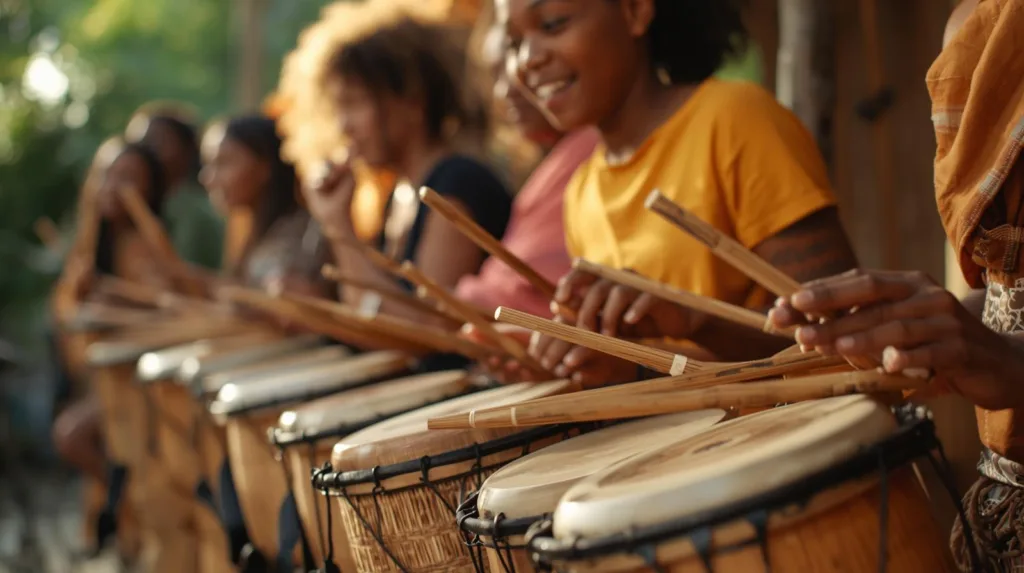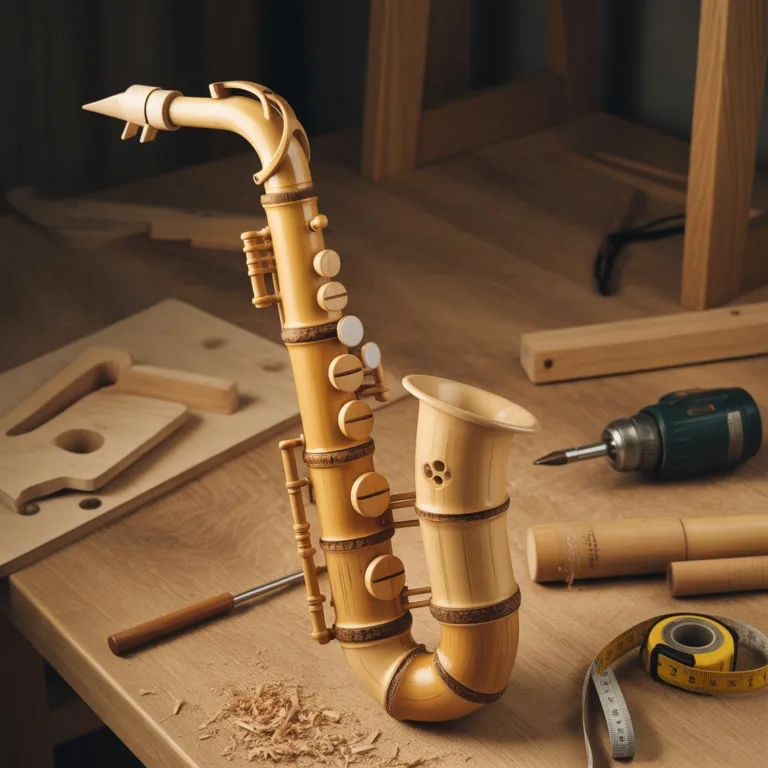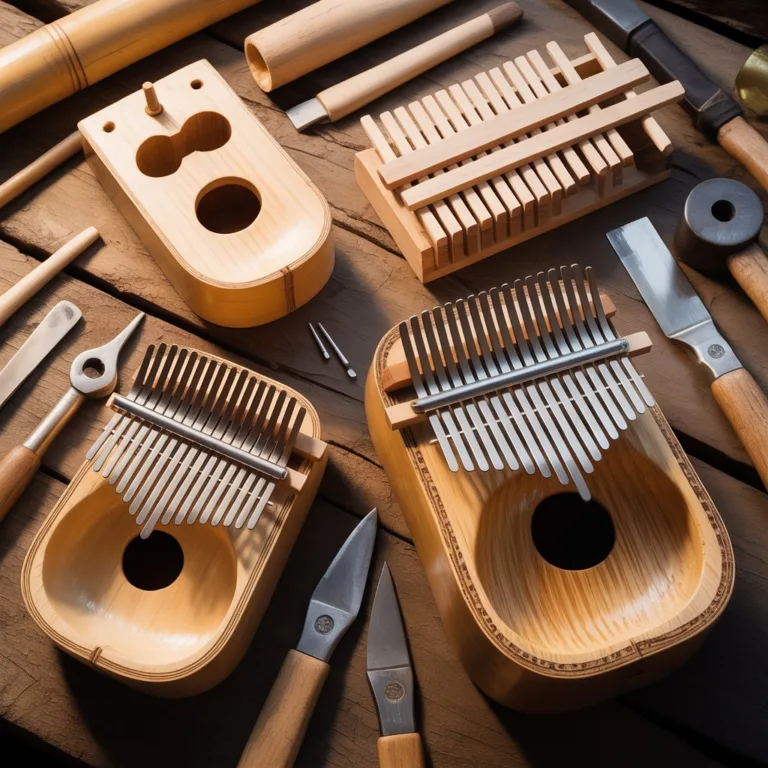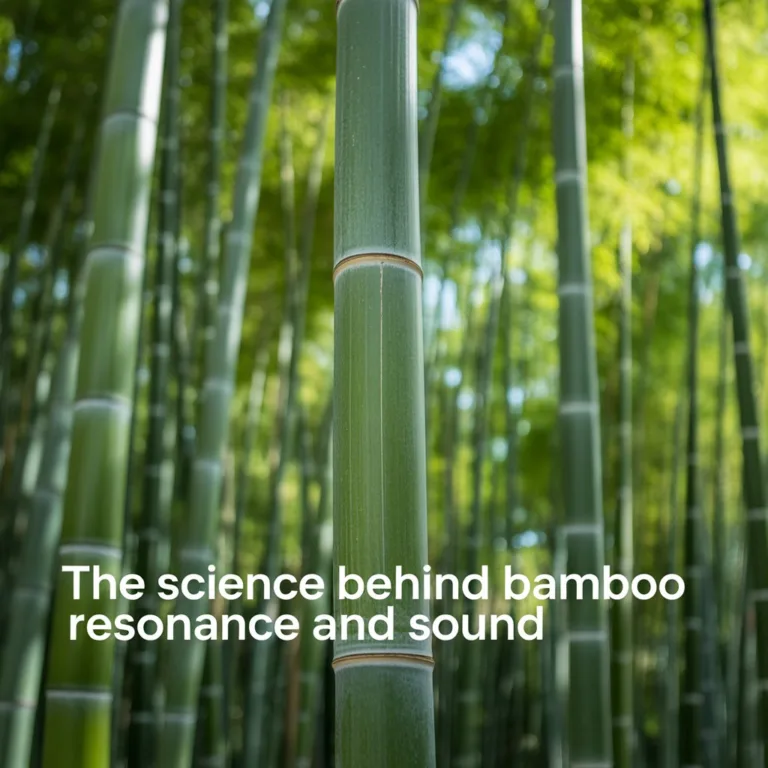In a world increasingly aware of environmental impact, sustainability has found its rhythm in the realm of music. From professional musicians to school educators and DIY enthusiasts, many are turning to natural materials to create musical instruments that not only sound beautiful but also honor the planet. Among these materials, bamboo stands out as one of the most versatile, renewable, and inspiring resources.

Building eco-friendly percussion instruments from bamboo merges creativity, craftsmanship, and environmental consciousness. Whether you’re an artist looking for a new sound, a teacher planning a classroom activity, or simply a maker who enjoys working with natural materials, bamboo offers endless possibilities. Its strength, flexibility, and acoustic properties make it ideal for crafting a wide range of percussion instruments—from simple shakers to intricate xylophones.
This article explores how to create musical instruments from bamboo, why it’s such an exceptional material, and how this sustainable practice can connect you to both nature and rhythm.
The Natural Harmony of Bamboo
Bamboo is often referred to as “nature’s miracle material.” It grows quickly, regenerates without replanting, and requires minimal resources. Some species can grow over 30 inches a day, making it one of the most renewable materials on Earth. Beyond its sustainability, bamboo also has outstanding acoustic properties. Its hollow structure and natural resonance make it ideal for instruments that rely on vibration and tone.
Cultures around the world have used bamboo in music for centuries. In Asia, bamboo flutes and drums are deeply rooted in tradition. In Africa and South America, bamboo rattles and percussion tubes accompany rituals and celebrations. Today, artists and eco-conscious creators are rediscovering bamboo’s potential, combining traditional knowledge with modern design to produce eco-friendly percussion instruments that are both functional and environmentally responsible.
Why Bamboo Is Perfect for Percussion Instruments
The qualities that make bamboo a sustainable resource also make it acoustically rich and durable. When crafting percussion instruments, several factors contribute to bamboo’s excellence:
- Hollow structure: Naturally tubular, bamboo acts as a resonating chamber, amplifying sound without needing additional materials.
- Hardness and flexibility: Its fibrous texture gives a clear, sharp tone when struck or shaken.
- Lightweight yet strong: Easy to handle, transport, and work with for all ages and skill levels.
- Eco-friendly lifecycle: 100% biodegradable and carbon-neutral when responsibly harvested.
These characteristics allow bamboo to replace plastics, metals, and other environmentally harmful materials often used in modern instrument production.
Getting Started: Sourcing and Preparing Bamboo
To create high-quality percussion instruments, start with the right bamboo. The best bamboo for instrument-making is mature—typically between three to five years old—and free of cracks or insect damage.
If you’re gathering bamboo yourself:
- Harvest during the dry season when moisture levels are lower.
- Cure the bamboo by air drying it for several weeks to prevent splitting.
- Treat it with a natural preservative, such as borax and boric acid solution, to protect against pests and mold.
If sourcing from a supplier, look for FSC-certified bamboo or bamboo grown using sustainable forestry practices.
Proper preparation ensures your instruments last longer and produce richer, more consistent sounds.
Exploring Bamboo Percussion Instruments
Bamboo’s versatility allows for endless musical creations. Below are several types of percussion instruments that can be crafted from bamboo, along with ideas for customization and performance.
1. Bamboo Shakers
Bamboo shakers are among the easiest instruments to make, perfect for beginners or classroom activities. To create one:
- Cut a small section of bamboo (10–15 cm) with closed nodes at both ends, or seal one end with natural wax.
- Fill it with seeds, small pebbles, or dried beans.
- Seal the other end, then decorate the surface with natural paints or carvings.
Different fillings produce distinct sounds. Seeds give a soft rustle, while pebbles create a sharp, rhythmic tone. The texture of the bamboo itself also influences the resonance, offering endless variation.
These shakers can accompany folk music, meditative drumming, or school rhythm exercises.
2. Bamboo Claves
Claves are traditional percussion sticks that produce a crisp, high-pitched click when struck together. Bamboo versions are lighter than wooden ones and emit a bright, resonant tone.
To make them:
- Cut two equal bamboo rods about 20–25 cm long.
- Sand the ends smooth and remove any splinters.
- Optionally, coat them with a thin layer of natural oil to enhance durability.
Experiment with different bamboo thicknesses to create varied pitches. When played, bamboo claves produce a sound that cuts through ensembles and pairs beautifully with drums or guitars.
3. Bamboo Xylophones
Bamboo xylophones, sometimes called marimbas or tongued log drums, combine craftsmanship and acoustics beautifully. Each bamboo tube acts as a resonator tuned to a specific pitch.
To build one:
- Collect several bamboo tubes of varying lengths (shorter tubes for higher tones, longer for lower).
- Mount them on a wooden or bamboo frame using natural fiber cords.
- Strike them with mallets made from bamboo or rubber-coated sticks.
For tuning, test each tube by tapping and trimming small amounts until achieving the desired pitch. Bamboo xylophones create a warm, organic sound ideal for both children’s music and professional compositions.
4. Bamboo Rainsticks
A bamboo rainstick mimics the soothing sound of falling rain, often used in meditation, sound therapy, or relaxation sessions.
To make one:
- Choose a long bamboo tube (60–100 cm).
- Insert small thorns, nails, or toothpicks spiraling inside the tube’s length.
- Seal one end, fill it with small stones or seeds, and close the other end.
When tilted, the filling cascades over the internal obstacles, creating a calming rainfall sound. Each rainstick has a unique tone depending on its size and materials.
5. Bamboo Drums
Bamboo drums can range from small hand drums to large standing instruments. Some traditional drums use bamboo as a resonating chamber, while others use it as a frame for natural membranes.
For a simple version:
- Cut a large piece of bamboo with one closed end.
- Stretch natural latex or recycled material (like parchment paper or animal-free drum skin) across the open side.
- Secure it with rope or natural cord.
The resulting sound depends on bamboo thickness and drumhead tension. These drums produce deep, earthy tones and can be played with hands or sticks.
6. Bamboo Wind Chimes and Percussion Chimes
Though technically both percussion and ambient instruments, bamboo wind chimes create a harmonious blend of melody and rhythm. When struck by wind or by hand, each tube emits a soft, hollow tone.
For a handmade chime:
- Cut several bamboo tubes of different lengths.
- Suspend them from a circular frame using string or hemp cord.
- Hang a small piece of bamboo or wood in the center to act as a striker.
Bamboo chimes are perfect for meditation spaces, gardens, or classrooms, producing sounds that soothe and inspire creativity.
Educational Benefits of Making Bamboo Instruments
Creating eco-friendly percussion instruments from bamboo isn’t just about music — it’s a deeply educational experience. Schools, workshops, and community centers often use bamboo instrument projects to teach sustainability, cultural appreciation, and creativity.
Educational benefits include:
- Environmental awareness: Students learn about renewable materials and their importance.
- Fine motor skills: Cutting, sanding, and assembling improve coordination and craftsmanship.
- Cultural connection: Exploring traditional bamboo instruments introduces global music heritage.
- Teamwork and collaboration: Group building activities foster cooperation and problem-solving.
Music education combined with environmental consciousness empowers younger generations to create joy responsibly.
Sustainable Crafting Practices
When working with natural materials, it’s essential to maintain eco-friendly habits throughout the process.
- Use recycled or reclaimed bamboo whenever possible. Old furniture, garden stakes, or flooring can be repurposed into instruments.
- Avoid synthetic paints or varnishes. Opt for natural oils, beeswax, or water-based paints to protect the environment.
- Compost scraps or reuse them for smaller crafts like beads or jewelry.
- Share knowledge. Teaching others how to build with bamboo multiplies the impact of sustainability.
Sustainable crafting is not just about the end product — it’s about respecting the process, minimizing waste, and valuing natural materials.
Enhancing Sound Naturally
Fine-tuning bamboo instruments requires understanding how sound travels through the material. You can experiment with:
- Wall thickness: Thicker bamboo yields lower, deeper tones.
- Length: Longer pieces produce bass notes, while shorter ones give treble.
- Node placement: The internal nodes act as sound barriers; adjusting them changes resonance.
- Surface finish: Smooth surfaces reflect sound, while textured finishes slightly dampen it.
Experimentation is part of the joy of making bamboo instruments. No two pieces of bamboo are identical, which means every instrument is uniquely yours.
The Cultural Legacy of Bamboo Instruments
Bamboo has been central to musical traditions for millennia. In Indonesia, the angklung—a bamboo rattle tuned to specific notes—is played in orchestras. In the Philippines, the bunkaka produces deep tones when struck. Across Africa, bamboo drums and clappers accompany ceremonies and dances.
These instruments are not only tools for sound but symbols of unity, storytelling, and respect for nature. Reviving and modernizing them through eco-friendly practices preserves cultural heritage while promoting sustainability.
Bringing Eco-Music into Modern Spaces
Artists and eco-designers are increasingly integrating bamboo instruments into performances, installations, and classrooms. The warm, organic sound of bamboo complements acoustic and electronic genres alike, inspiring innovation in music production.
Eco-conscious musicians also use bamboo percussion to raise awareness about deforestation, waste, and conservation. The connection between rhythm and sustainability makes bamboo instruments more than just tools of sound — they become voices for the planet.
Finding Rhythm in Sustainability
Creating eco-friendly percussion instruments from bamboo is more than a craft—it’s a statement of harmony between human creativity and nature’s generosity. Each handmade instrument carries the story of sustainable choices, mindful crafting, and the universal language of rhythm.
When you tap a bamboo clave or shake a handmade rattle, you’re not just making music. You’re participating in an ancient tradition that celebrates simplicity, resourcefulness, and connection to the Earth.
Building with bamboo reminds us that sustainability can be joyful, tactile, and deeply resonant. Every beat is a reminder that art and ecology can coexist beautifully — if we choose to listen.

Elena Mora is a creative educator and eco-craft enthusiast who specializes in bamboo musical instruments and sustainable toys for children. She believes that hands-on learning through play teaches kids about creativity, music, and environmental responsibility.



